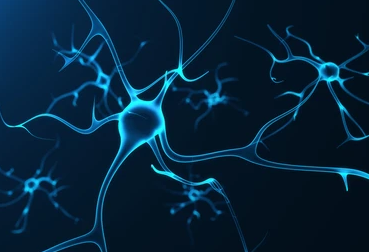Have you ever wondered how your brain can tell the difference between the smell of morning coffee and the aroma of hot chocolate, even though they share some odour molecules? Or how do animals differentiate between friendly or threatening sounds? Scientists have been exploring how neurons in our brains process such information. In our daily lives, stimuli like images and odours are represented as patterns of neuronal activity in our brains. To make sense of the world the brain needs to be able to differentiate between the patterns generated by neuron activity.
Recent research by Prof. Upinder Singh Bhalla and his PhD student, Bhanu Priya Somashekar, from the National Centre for Biological Sciences (NCBS), explored how the dendrites - the branches of neurons - can help distinguish these patterns. The study reveals that dendrites play a crucial role in distinguishing patterns, but only under specific conditions. One key requirement is that all the information regarding the stimuli should reach next to each other on the dendrite. Prof. Bhalla explains that their results imply that the brain does not need clever methods of connecting neurons to perform complex computations, even random connections between neurons will accomplish this over a large enough number of neurons. For this study, the researchers developed sophisticated computational models composed of equations that mimic brain activity. They simulated two populations of neurons. Some of the neurons in the first population (P1) represented features of stimuli such as the intensity or pleasantness of a smell through their activity. These neurons were randomly connected to the dendrites of the second population (P2).
Their results suggest that given several thousand neurons in the network, 3-5 neurons (from P1) carrying information regarding unique features of stimuli would be connected to a short segment of dendrite (of P2 neurons), as they predicted. These connections led to the combining of information from several different sources within the branches of individual neurons. However, not all neurons in the first population (P1) carried useful information. Some of them generated noise when connected to the dendrites of the second population (P2), which hampered the recognition of correct stimuli. Therefore, another condition was ‘low noise’ to correctly identify the pattern of activity. It is like trying to listen to music while walking on a busy road. Just as noise-cancelling headphones help block out distractions, the researchers identified a mechanism that enabled the neurons to selectively recognize patterns of interest and amplify the correct signals.
Somashekar suggests that it is a reasonable assumption to study the olfactory circuit that is responsible for identifying smells. She points out that further experiments in the biological systems are needed to verify the predictions from their work. Their study also provides a guide for the experimentalists and can be used as a starting point for experiments, she adds. Deviations from their predictions will also provide directions for the identification of factors required for neuronal connectivity and selectivity. The development of such computational models also opens up potential for new advances in developing neural networks. For example, adding biological features like dendrites can improve the performance of artificial neural networks. Their study has the potential to guide future experiments to understand brain regions and functions such as olfaction while also providing valuable insights into biologically inspired neural networks.
Original article – Bhanu Priya Somashekar, Upinder Singh Bhalla, eLife, 2024.Discriminating neural ensemble patterns through dendritic computations in randomly connected feedforward networks. doi: https://doi.org/10.7554/eLife.100664.1









0 Comments